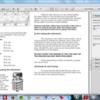quote:
Originally posted by danishcarnut:
quote:
Originally posted by No Quarter:
Heine, have you found the reason for the blow out? So not to experience it again, even with better gaskets? Is timing too advanced, detonation? I know you wrote timing was set "by ear"? I suggest a little less advance at least to start with when you get it assembled...
Mikael,
I did find the problem today. One of the brandnew TFS heads are warped !!! 0.25 mm (0.01") - I just don't get it. The engine has NEVER been hot, and the ARP bolts are tightend per description. So I have to get the heads maschined, and assemble it all Again with new and better gaskets. Just got an email from Dan Jones, and he recommend Victor-Reinz 3502SG head gaskets. Maybe I should try them ?
Change gaskets. The point of Fel-Pros is that they don't need re-torking. Even with the head a .001" out, the head gasket should be able to handle that.
Send a nasty note to TFS about their lack of quality control on their finished products but you'd have to prove they delivered the head that way.
Your engine builder could have decided to shave the heads and it could be his machine that is out of whack.
The Reintz gasket materials was always recommended by the racers on the Clevelands and will give you the ability to torque the bolts tighter.
What happened to your engine would make me question everyone who was responsible for putting it together.
This engine is not notorious for blowing head gaskets at all.
If we were talking a Ford 427 with aluminum heads, then that's a different story.
There is a science to building a head gasket for the match of aluminum head on iron block.
The head actually floats on the gasket and the gasket has a controllable amount of crush to it.
Normally I would have recommended the Fel-Pro blue head gasket to anyone. Now I have to keep this in the back of my mind?


